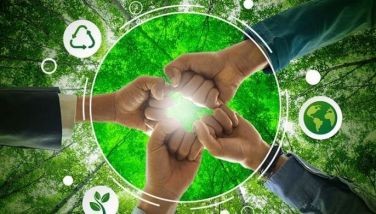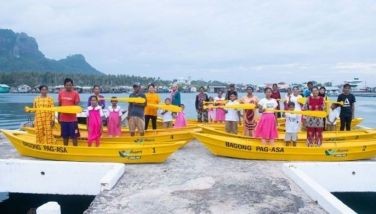Renewable energy

Last Monday on my first full day in Iceland, the first snow of the season fell, heralding the start of winter.
Intermittent drizzles fell on the second day, and there were showers throughout most of Wednesday as I explored two famous waterfalls and the spectacular Black Sand Beach facing the Atlantic Ocean. My winter coat and cap were wet and the rain combined with the strong wind made the winter temperature – mild at 6 degrees Celsius – feel like it was below zero.
Yet I never developed a cold, fever or allergic sneezing, which happens when I am caught in a drizzle in Manila. I attribute this to the quality of the water in Iceland, whether from the sky or from the faucet. You can drink clean water straight from the tap anywhere in the country, and not worry about getting sick if you are caught even in drenching rain.
It wasn’t always like this in Iceland, a country known for being clean and green. Civil engineer Ludvik Georgsson, director of the geothermal training program at the United Nations University in Reykjavik, told me that smog from coal used to envelop the city from the 1940s to the 1960s.
All the coal, used for heating and generating electricity, was imported from different countries. The fuel was cheap and readily available.
Things changed, Georgsson recalls, when the global oil crisis struck in 1973, and then again in 1980. Fuel became an important factor in government policy, he said. It became “a political decision” to wean the country from its reliance on imported fuel and to maximize the utilization of Iceland’s natural resources.
* * *
The country, whose land was formed from volcanic activity, is blessed with one of the world’s most abundant geothermal resources and rich sources of freshwater. All that heat and activity from the bowels of the planet didn’t go unnoticed. As early as the 1930s, Georgsson says, Icelanders were already studying the possibility of tapping geothermal energy for indoor heating.
Today Iceland is 100 percent reliant on renewables for its energy needs, mainly geothermal and hydropower. Only automobiles, fishing vessels and aircraft still use fossil fuels, although as in much of Europe, there is a strong interest among Icelanders in e-vehicles and hybrids.
It took about 15 years, Georgsson recalls, for Iceland to make the full shift from dirty coal to clean energy.
When the oil crisis hit, about 50 percent of their households readily embraced geothermal heating, with Japanese technology providing the turbines and Iceland the pipes. Within the next decade, the ratio increased to 80 percent. Today the figure is about 90 percent, with only the towns too far from geothermal sources still not covered.
Even with the initial investment factored in, renewables can still come out cheaper, Georgsson told me during an interview in Iceland’s capital Reykjavik. This is especially true, of course, if the fuel is locally sourced.
The United States is the largest producer of geothermal power, but per capita it’s Iceland. Guess which country is the second largest per capita?
The Philippines – but only until 2016.
* * *
Last year we were pushed down to third place by that other land of many volcanoes – Indonesia.
Georgsson, who is a regular visitor to the Philippines and Indonesia, attributed our slide to Indonesia’s increased development of geothermal power plants.
Indonesia and the Philippines both sit along the Pacific Ring of Fire. Considering all the volcanoes around our archipelago, I’m sure there’s still a lot of geothermal energy that can be harnessed.
Iceland is showing that clean energy is not necessarily more expensive than power harnessed from fossil fuels. Heating and electricity costs in Iceland are lower by at least half or more compared with the other Scandinavian or Nordic countries, according to Georgsson.
With our population of over 100 million (compared to Iceland’s 350,000), of course we can’t rely only on one type of power source for our energy needs.
We are utilizing hydropower and natural gas, but the power generated is not enough for the needs of our ever-growing population. Even the environment-conscious President Duterte concedes that coal remains the most affordable fuel for power generation, with its proponents saying the technology for its utilization is becoming kinder to the environment.
* * *
Still, the government can provide incentives to attract more investments in wind and solar power, for example, and in natural gas production. There’s a great deal of interest among ordinary Filipinos for solar panels for household and office use.
Iceland can’t rely on solar power because the sun disappears during the winter months in that part of the planet. And it is producing enough energy from geothermal and hydropower to be an exporter so it has felt no need to harness its abundant winds for additional energy.
The situation is different in our country. Persons directly involved in power generation have warned us in our newspaper of a looming energy crisis. These industry experts warned us that the power being generated isn’t keeping pace with the growth of the population and demand from various industries.
We already had Asia’s highest power cost before the government slapped excise taxes on energy and fuel this year. The high cost of power has been one of the biggest disincentives to manufacturing and related economic activities.
The need to diversify our fuel sources, with special focus on our natural resources, deserves priority. The move should be good both for the environment and the economy.
- Latest
- Trending























